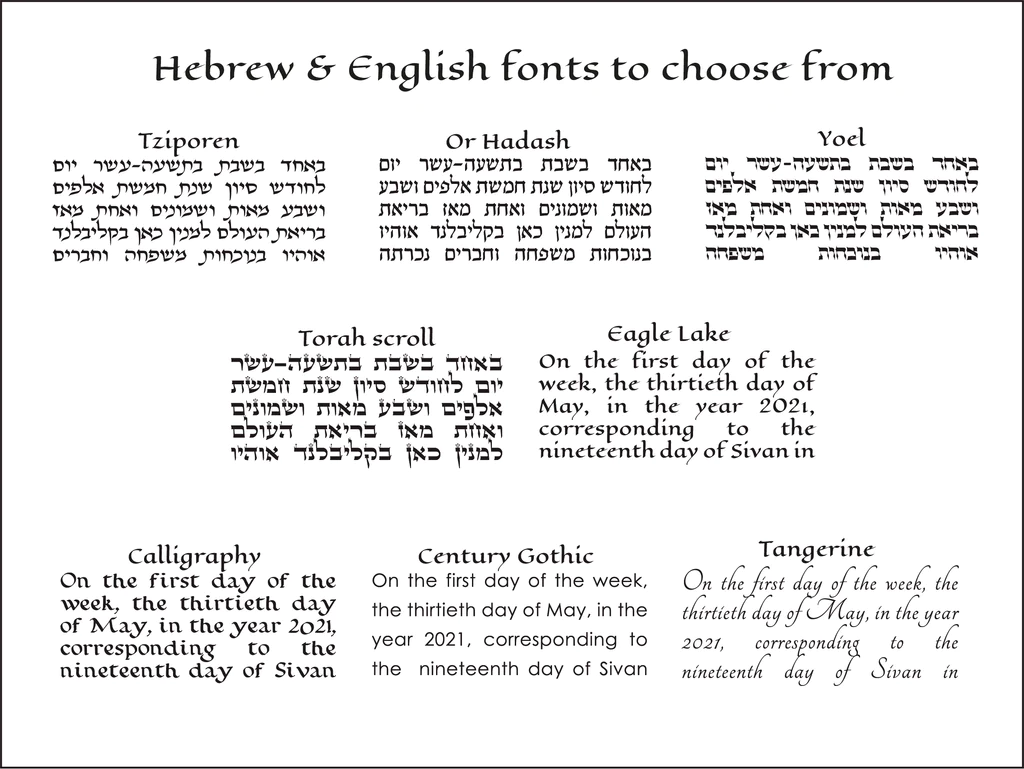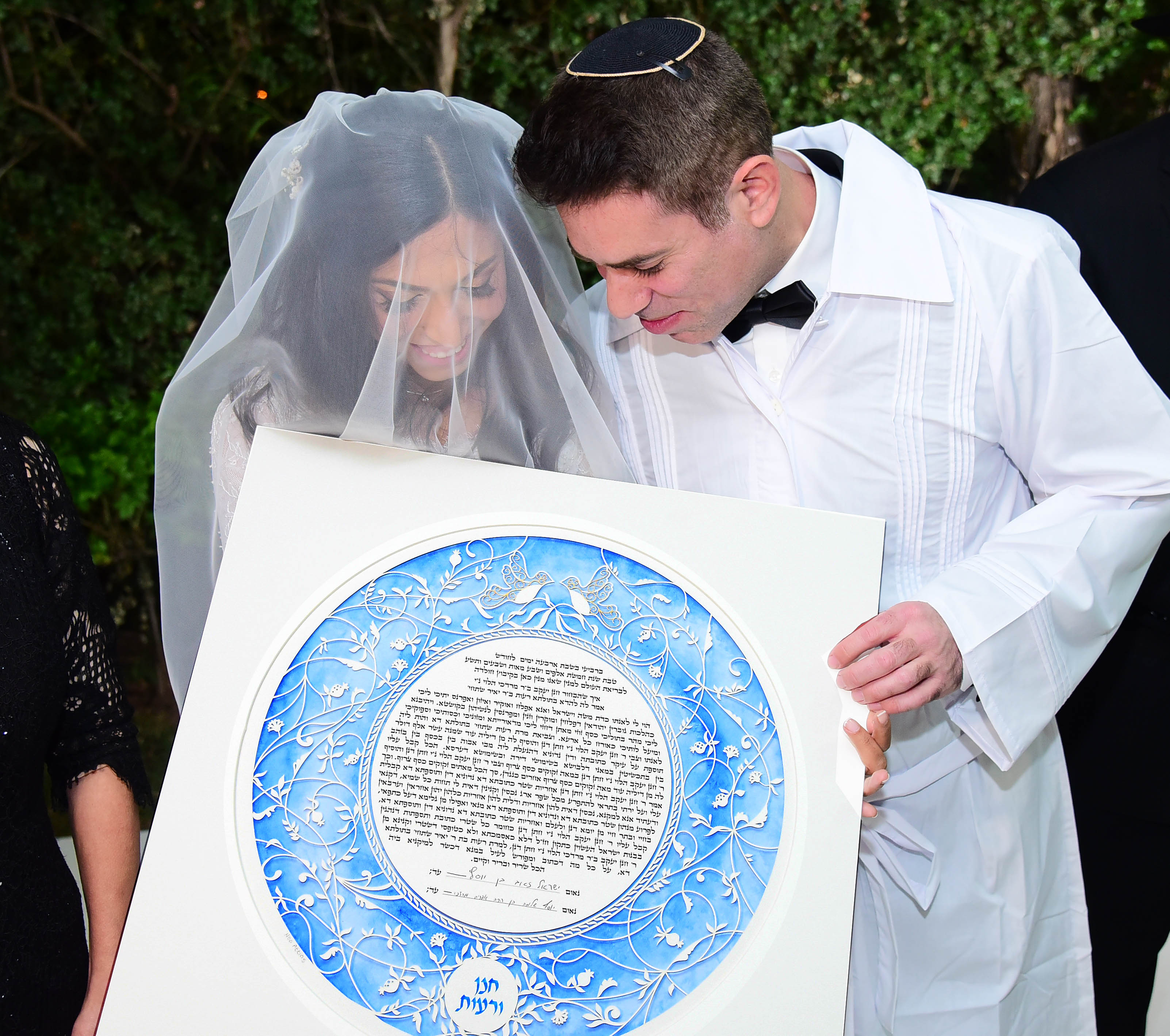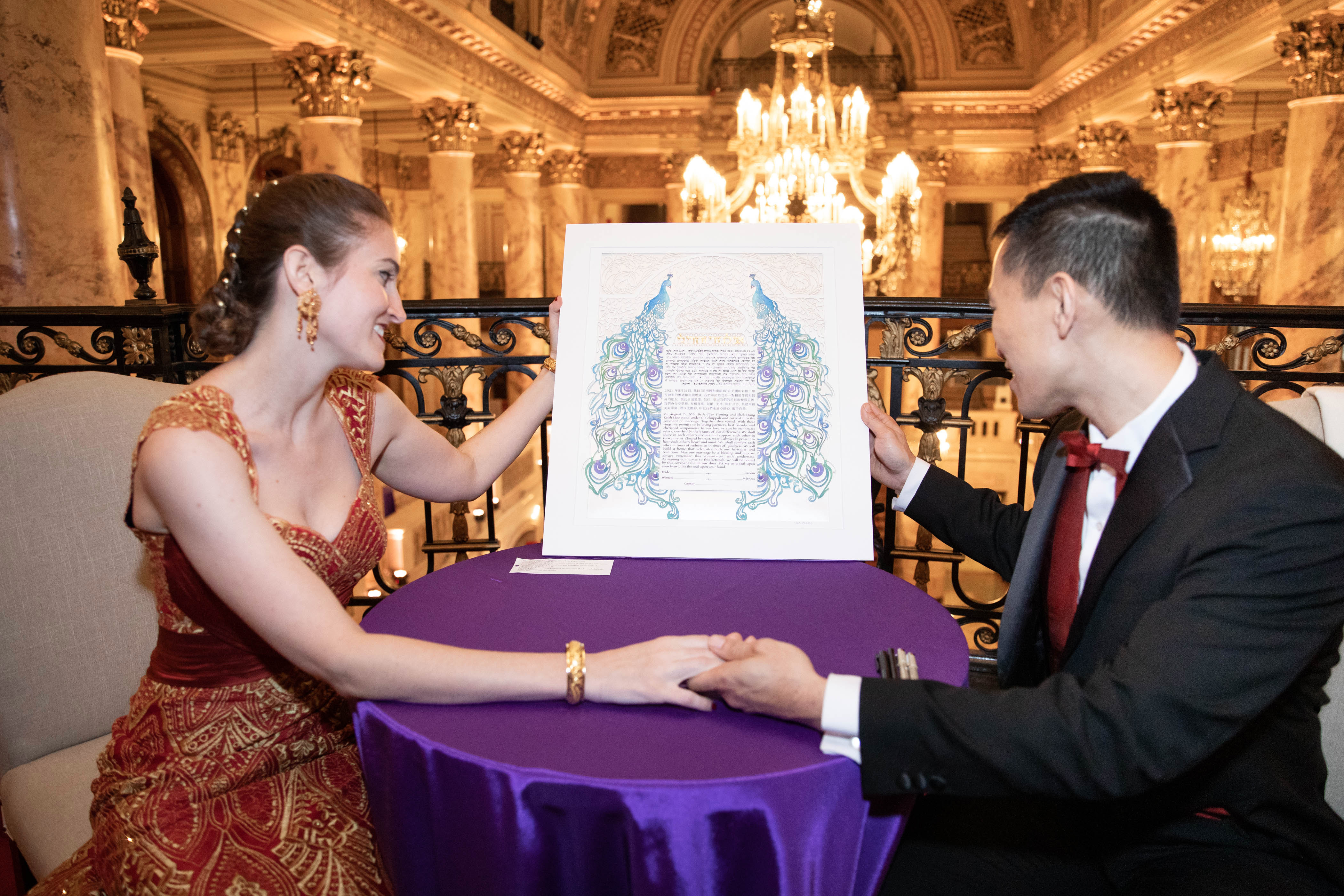This review methodically dissects the Ketubah signing process, a key element in Jewish wedding ceremonies, and the legal considerations attached to it. It explores the symbolic and legal implications of the Ketubah, its historical context, the roles of various participants, legalities involved in the signing, as well as common variations in contemporary times.
Understanding the Ketubah: What's in a Contract?
The Ketubah is a traditional Jewish marriage contract that outlines the rights and responsibilities of both the bride and groom. It is not just a piece of paper, but a legal document that holds significant cultural and religious value. The Ketubah is often beautifully designed and personalized, making it a cherished keepsake for many couples.
Within the Ketubah, there are several key components that make it a binding contract. Firstly, it outlines the financial obligations of the groom towards the bride, including the provision of food, clothing, and conjugal rights. It also includes a stipulated monetary sum, known as the "kesef" or "dowry," which the groom promises to pay the bride in the event of divorce or widowhood.
Additionally, the Ketubah includes provisions for the wife's financial security, such as the bride's share in the couple's property and assets. These provisions ensure that the wife is protected in case of divorce or the husband's death. Moreover, the Ketubah may include conditions related to custody of children, support obligations, and inheritance rights.
It is important to note that the Ketubah is not just a one-size-fits-all contract. It can be customized to reflect the couple's values, beliefs, and preferences. Couples often work with a rabbi or a religious authority to draft a Ketubah that meets their specific needs.
In recent years, there has been a growing trend of creating modern and inclusive Ketubahs that reflect the evolving nature of relationships and marriage. These Ketubahs may include language that is gender-neutral, or they may incorporate elements from different cultural backgrounds.

An illustration of a traditional Ketubah text.
Historical Context: How Did the Ketubah Evolve?
The Ketubah has a rich historical context that dates back thousands of years. Its origins can be traced to ancient Jewish customs and practices surrounding marriage. In ancient times, the Ketubah served as a means of protecting the rights of women in a patriarchal society. It provided financial security and ensured that the wife would be taken care of in case of divorce or the husband's death.
Originally, the Ketubah was a relatively simple document, consisting of basic legal and financial obligations. However, over time, it evolved into a more elaborate and artistic document. Jewish communities around the world began incorporating decorative elements and intricate designs into the Ketubah, making it a visually stunning piece of art.
Throughout history, the content and format of the Ketubah have varied across different regions and time periods. In some cases, the language used in the Ketubah was influenced by the prevailing legal systems of the time. For example, in medieval Spain, Ketubahs were often written in Arabic or Hebrew with influences from Islamic law.
The Ketubah also reflects the cultural and social changes that Jewish communities have experienced over the centuries. As societies evolved and women's rights advanced, the language and content of the Ketubah were adapted to reflect these changes. Today, many couples choose to include language in their Ketubah that emphasizes equality and mutual respect in their marriage.
"Who's Who?": The Roles of Signatories in the Ketubah
The signing of a Ketubah involves various individuals who play significant roles in the process. Understanding the responsibilities of each signatory is essential for a comprehensive understanding of the Ketubah signing ceremony.
- 1. Bride and Groom:
The primary signatories of the Ketubah are the bride and groom. They are the individuals entering into the marriage contract and are responsible for agreeing to the terms and conditions outlined in the Ketubah. Their signatures represent their commitment to each other and their willingness to uphold the promises made in the document. - 2. Witnesses:
The presence of witnesses is crucial in the Ketubah signing process. Traditionally, two male witnesses are required, although some modern interpretations allow for female witnesses as well. Witnesses should be individuals who are not related to the couple and who are of sound mind and legal age. Their role is to observe the signing and attest to the authenticity of the document by signing their names. Their signatures validate the legality and legitimacy of the Ketubah. - 3. Waiter:
In some ceremonies, an officiant, such as a rabbi or a religious leader, may be present during the Ketubah signing. The officiant acts as a guide and facilitator, ensuring that the signing process adheres to religious and legal requirements. They may provide guidance on the significance of the Ketubah and assist in the completion of the ceremony.

A diagrammatic representation of the roles of signatories.
Behind the Ink: The Legal Implications of Signing a Ketubah
When signing a Ketubah, it is important to recognize the legal implications that accompany this ancient marriage contract. Understanding these implications can help couples make informed decisions and ensure that their rights and obligations are protected.
- 1. Binding Contract:
The Ketubah is not just a ceremonial document; it holds legal significance. By signing the Ketubah, the couple becomes bound by its terms and conditions. This means that the obligations outlined in the contract, such as financial responsibilities or division of property, can be legally enforceable in a court of law. It is crucial for couples to carefully review and understand the contents of the Ketubah before signing to avoid any potential legal complications. - 2. Financial Obligations:
One of the key aspects of the Ketubah is the financial obligations it outlines. The document typically details the husband's financial responsibilities towards the wife, including provisions for her support, inheritance rights, and provisions in the event of divorce or death. These financial obligations can have significant legal implications and can impact the division of assets in the event of a marital breakdown. It is important for couples to consult with legal professionals to ensure that the financial provisions in the Ketubah align with their desires and comply with applicable laws. - 3. Marriage Validation:
In some jurisdictions, the Ketubah serves as a legal validation of the marriage. It may be required to be registered with the appropriate authorities to make the marriage legally recognized. This means that the Ketubah is not only a symbolic representation of the couple's commitment but also a vital legal document that establishes their marital status. Couples should research the specific legal requirements in their jurisdiction and follow the necessary procedures to ensure that their Ketubah is properly recognized.
Challenges and Solutions: What if Something Goes Wrong?
Even with careful planning and consideration, there may be instances where issues arise regarding the Ketubah. It is important for couples to be aware of potential challenges and have solutions in place to address them.
One common challenge is the failure to fulfill the financial obligations outlined in the Ketubah. If one party fails to meet their financial responsibilities, it can lead to disputes and legal complications. To prevent this, couples can consider including specific provisions in the Ketubah that outline the consequences of non-compliance and establish a clear process for resolving such disputes.
Another challenge that may arise is the interpretation of the Ketubah's terms and conditions. Ambiguities in language or differing interpretations can lead to misunderstandings and disagreements. To mitigate this risk, couples should ensure that the language used in the Ketubah is clear and unambiguous. Seeking legal advice during the drafting process can also help to clarify any potential areas of confusion.
In the unfortunate event of a divorce, the Ketubah may play a significant role in the division of assets and financial settlements. However, the laws regarding divorce and the enforceability of Ketubah provisions can vary depending on the jurisdiction. Couples should consult with legal professionals to understand the legal implications of their Ketubah in the event of a divorce and consider including provisions that address potential divorce scenarios.
Finally, it is essential to consider the possibility of a lost or damaged Ketubah. This can happen due to various reasons, such as fire, flood, or theft. To safeguard against this, couples should make copies of the Ketubah and store them in secure locations. Some couples also choose to digitally store their Ketubah to ensure easy access and prevent loss.

a couple discussing potential issues during the Ketubah signing process.
Modern Interpretations: How is the Ketubah Evolving?
In recent years, the Ketubah has seen a shift in its interpretation and design, reflecting the changing values and preferences of couples. While the traditional Ketubah focused primarily on financial and legal obligations, modern interpretations often emphasize the emotional and spiritual aspects of the marital commitment.
One notable trend is the inclusion of personalized vows and promises within the Ketubah. Couples now have the opportunity to express their unique love and commitment to each other, adding a more intimate and personal touch to the document. This allows the Ketubah to serve not only as a legal contract but also as a symbol of the couple's shared values and aspirations.
Another evolving aspect of the Ketubah is its artistic representation. While traditional Ketubahs often featured intricate calligraphy and ornate designs, contemporary versions have embraced a wide range of artistic styles. Many couples now commission artists to create customized Ketubahs that reflect their personalities, cultural backgrounds, or shared interests. This artistic evolution adds an additional layer of meaning and aesthetic beauty to the Ketubah.
Furthermore, there is a growing emphasis on inclusivity and diversity in modern Ketubahs. Couples are increasingly incorporating gender-neutral language and adapting the Ketubah to accommodate same-sex marriages. This inclusive approach recognizes and celebrates the diversity of relationships and ensures that the Ketubah remains relevant and meaningful to all couples.
Final Thoughts: What Does the Future Hold for the Ketubah?
As we look to the future, the Ketubah is likely to continue evolving and adapting to meet the changing needs and values of couples. With the increasing recognition and acceptance of diverse relationships, we can expect the Ketubah to become even more inclusive, accommodating the unique dynamics and commitments of various partnerships.
Moreover, advancements in technology may also impact the design and creation of Ketubahs. With the rise of digital platforms and online customization tools, couples may have the option to create and personalize their Ketubahs with ease. This accessibility may lead to a wider range of artistic styles and design options, allowing couples to truly make their Ketubah a reflection of their individuality.
Additionally, as society becomes more environmentally conscious, we may see a shift towards eco-friendly Ketubahs. Couples may opt for sustainable materials and printing methods, aligning their marital commitment with their values of environmental stewardship.
While the Ketubah's legal significance may remain a cornerstone of the document, we can anticipate further exploration of its emotional and spiritual dimensions. Couples may continue to incorporate personalized vows, affirmations, or blessings that reflect their deep connection and shared vision for their future together.

A photo of a young couple holding their newly signed Ketubah, looking towards the future.
In conclusion, the Ketubah signing process is not just a traditional ritual, but also a significant legal contract that binds the couple in marriage. Understanding the intricacies of the process and its legal implications is essential to fully appreciate the sanctity and seriousness of this Jewish marital contract.



